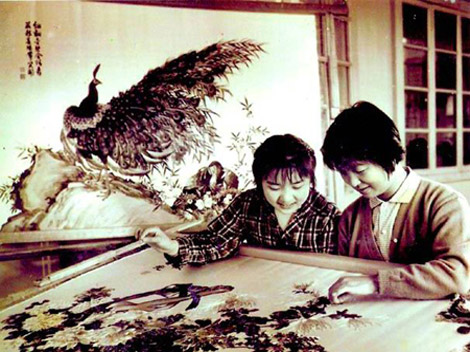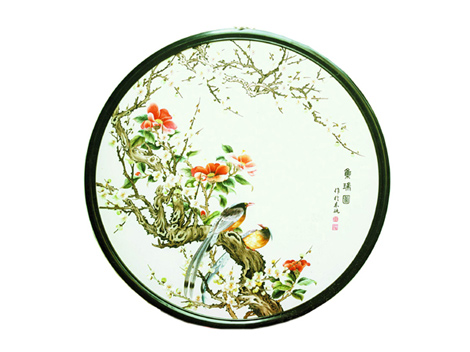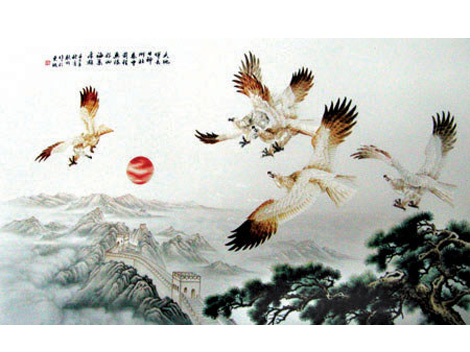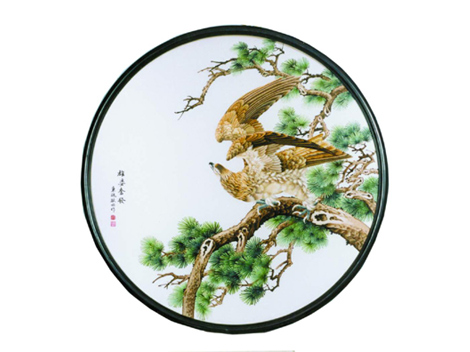
Ou Embroidery was produced in the region along the reaches of the Ou River, which gave the name to the art. It flourished in the Ming and Qing dynasties, and works were used in Buddhist temples. Over eight hundred years ago, embroideries were widely used in Wenzhou as ornaments to people’s clothes, and the techniques were brought to a considerable level. As a traditional folk art in south of Zhejiang, the Ou Embroidery was one of the most famous embroidery styles rivaling Xiang, Su and Yue.

In the year of Xianfeng of the Qing Dynasty (1853 C.E.), professional embroidery manufacturers began to emerge in Wenzhou, with approximately 600 to 800 people specialized in the profession. It is said that the Ou Embroidery was originated in folk art and was first restricted by women, girls over twelve years of age were taught to do embroidery by their mothers. Ou Embroidery was widely used in clothes, hats, pinafores, bellybands, shoes, pillows and pouches. Motifs were focused on birds and flowers. As a traditional art, Ou Embroidery has been encouraged and supported by the government by giving more opportunities and efficiencies to the embroiderers.

In late Qing Dynasty, professional embroidery manufacturers in Wenzhou became the suppliers of embroidered official costume, imperial robes and folding screens in temples, motifs were portraits, floral and landscapes. Production gradually expanded to pillow shams, quilts and draperies.






